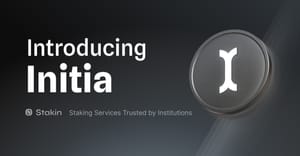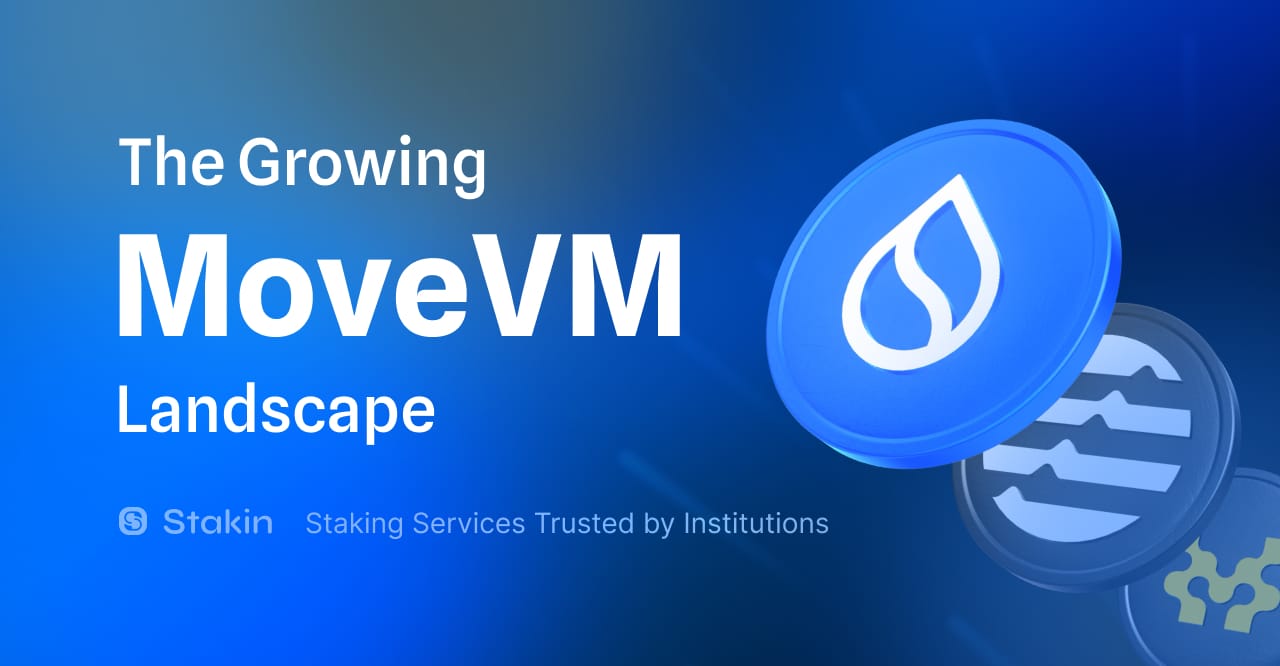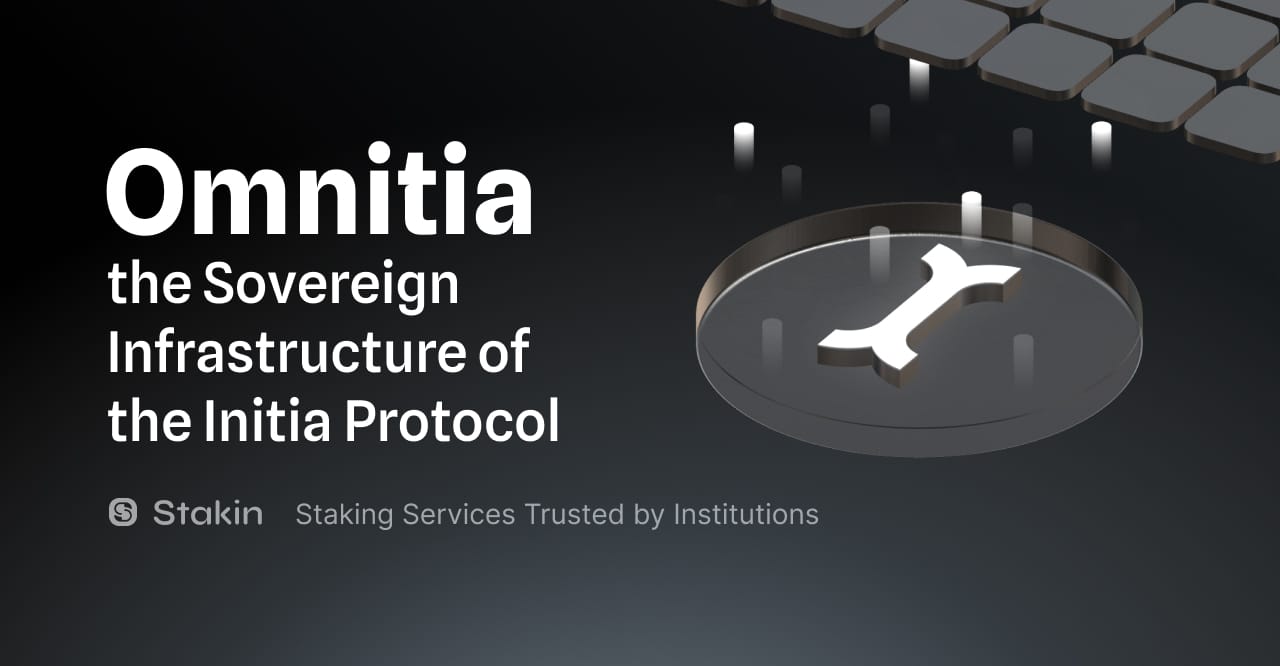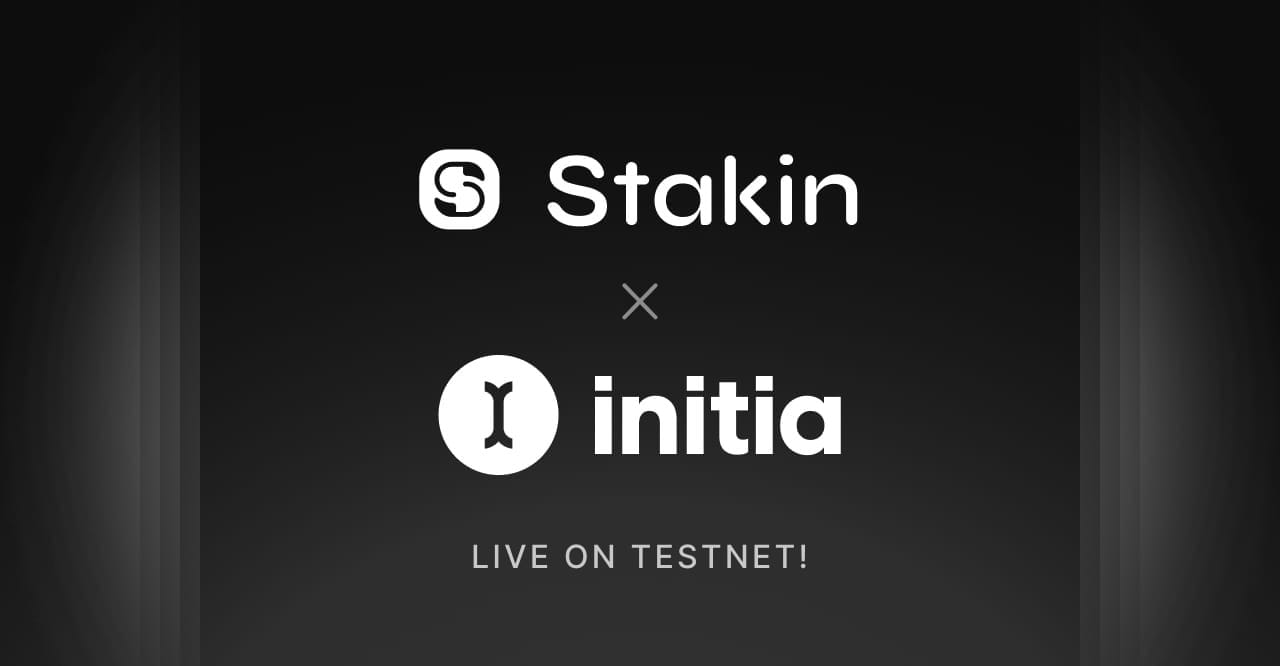Multichain is not just a buzzword in the blockchain landscape but a solid reality, now more than ever. New networks keep coming to life, all with different focuses and use cases, but they are still affected by the same problems. One for all, the biggest pain point for users and developers: an infinity of chains, wallets, and interfaces of all kinds.
Initia wants to solve that issue by changing the underlying paradigm. By fusing L1 technology with an app-specific L2 stack into a brand-new infrastructure, the protocol aims to abstract complexities from traditional multichain systems and foster a more scalable environment of interconnected app-specific blockchains. That is why Initia is also known as “the Network for Interwoven Rollups”.
What is Initia?
Initia introduces a novel approach to building blockchain ecosystems. Most blockchain networks tend to focus mainly on enhancing their L1 capabilities and performance to strengthen the core of their product without caring about creating an ecosystem equipped with the right tools to grow different use cases (scale vertically through app-specific layers). As a result, they are built in a monodirectional and static way.
But that’s not the case for Initia. Built on top of the Cosmos SDK, Initia Layer 1 integrates a bespoke Layer 2 infrastructure powered by the OPinit Stack—a VM-agnostic Optimistic Rollup framework. The Initia Layer 1 serves mainly as an orchestration layer to facilitate coordination and security across the interwoven rollups framework. The OPinit Stack framework supports different environments like EVM, MoveVM, or WasmVM, all while leveraging Celestia's Data Availability (DA) layer.
An open approach like this holds significant benefits for the Initia ecosystem as a whole:
- A proprietary technology allows more flexibility and composability, such as implementing chain-level mechanisms that align interests between all the network participants and deploying first-of-its-kind new features.
- Including different environments simplifies the builders’ job. With the Initia platform, developers can deploy smart contracts using multiple languages (Solidity, Move and WebAssembly) and access a broad suite of built-in functionalities such as cross-chain interoperability via IBC, instant bridging, EVM & Cosmos wallet signing and much more.
- An ecosystem well-furnished with tools to navigate different use cases in the same place (DeFi, games, trading, bridges, etc.) retains users and incentivises new ones to join. Breaking down entry barriers for builders allows for the creation of user-friendly rollups and apps that will onboard less skilled/non-native users.
Team background and funding
As expected from a project willing to revolutionize blockchain, Initia boasts a solid team of approximately 30 members with a stellar curriculum.
Initially composed mostly of blockchain protocol architects, the team has expanded, adding core devs from Cosmos and Ethereum, TradFi experts, researchers, and software engineers from top tech companies like Meta, Apple, Amazon, and Google.
Co-founders Zon and Stan are the minds behind Initia. Coming from different backgrounds, Zon studied mathematics and worked as a quant trader, while Stan studied computer science and worked as a software engineer; the duo met at Terraform Labs (the former entity behind the deceased Terra Classic blockchain), where it didn’t take long to make a name.
A few months before the Terra Classic forfeit, the duo decided to leave Terraform Labs to focus solely on formalising a new concept of Defi blockchain capable of fixing the issues faced by most Layer 1s. Thus, thanks to the help of other core engineers, their vision of a system leveraging modular interwoven rollups started to take shape.
Bear market or not, great tech always finds a way. After a year of building, in October 2023, Binance Labs announced its investment in Initia, taking the project out of stealth mode and putting it straight under the spotlight. Despite the undisclosed funding amount, the news has brought much attention to Initia and helped spread the news about their new technology.
It’s well known that Binance Labs loves to support builders and innovators aiming to create mass-market products or next-gen tech from very early stages till listing. The exchange venture arm has one of the most extensive portfolios of companies spanning all the different verticals in the industry (Web3 wallets, infra projects, Defi, gaming, etc.). Still, it has always shown great interest in smart contract platforms and new Layer 1/2s. Indeed, most top blockchain protocols belong to its portfolio, such as Aptos, Sui, Polygon, Manta Network, Oasis, Multiverse X, and more.
Notably, Binance Labs has recently demonstrated great support for Cosmos SDK-based chains by investing in Injective, Kava, Celestia, BounceBit, and Babylon. The exchange counterpart supports their listing together with other projects using the same tech stack (Sei, Dymension, Saga).
However, Binance Labs' pre-seed round was just the beginning. This spark of interest caught the attention of other leading crypto investors. Indeed, four months later, the project announced the closing of a $7.5M seed round led by Delphi Ventures and Hack VC. Other participants in this round are Nascent, Figment Capital, a_capital, and Big Brain Holdings.
Both round leaders claim to be impressed by the Initia team's unparalleled experience in Cosmos and feel confident in their abilities and vision. Rollup environment fragmentation is a primary concern in the current blockchain landscape and the most significant obstacle for developers. The unifying solution provided by Initia and its stellar team’s background has won the trust of such seasoned investors, who will provide full backing for this venture.
Notable names can also be found among Initia’s angel investors, such as pseudonymous Twitter personalities Cobie and DCF God, but also C-levels from other outstanding projects like Nick White (Celestia COO) and Berachain co-founder SmokeyTheBera. Such an innovative and intriguing protocol will likely attract more funding in the future, with many other investors waiting to get their hands on an allocation. With mainnet planned for Q3 2024, Initia will likely close another funding round just before the token TGE and listing.
Initia protocol's unique features
Multi-language smart contracts
What is impressive about Initia is the variety of virtual machines (VMs) and programming languages integrated into its architecture. Most notably, it is the first-ever Cosmos chain to integrate both Move’s programming language and its virtual machine.
To give some context, a team of former Facebook (now Meta) developers working at the Libra project invented and developed the Move programming language. Back in 2019, such a project was initiated with the intention of creating a stablecoin that could connect today’s Meta ecosystem (Facebook, Instagram, WhatsApp) through a unique payment system. Later, in 2022, after rebranding into Diem, the program was definitely closed due to the multiple blockers encountered and the adversary behavior of the SEC.
However, the work done on Move was of the finest quality, and such a gem couldn’t go to waste. Indeed, Move is already considered one of (if not the most) precise and secure languages for writing smart contracts. Thus, the former Facebook team split into two, both pursuing the creation of their own Layer 1 blockchain—the leading Move-based protocols Aptos and Sui.
Combining all the 3 most widely used VMs into a single blockchain tech stack allows for unparalleled composability. On Initia, developers have complete autonomy over customizing their L2s, which means they can pick the best tools from each environment to build their app-specific chain.
In addition, this breakthrough enables seamless communication between EVM, WASM, and MoveVM, allowing for easy bridging of data and assets. Initia L2s won’t need third-party service providers like bridges or oracles, as everything is interconnected in its ecosystem. Instead, the protocol will leverage IBC connectivity for cross-chain interoperability.
OPinit Stack
To orchestrate a framework of interwoven rollups, the Initia Layer 1 has been equipped with a modifìied version of Optimism’s OP Stack, a VM-Agnostic Optimistic Rollup framework called OPinit Stack.
This optimisation comes from the need to solve one of the major issues affecting the OP Stack: reliance on third-party service providers. Indeed, to create an ecosystem of so-called “interwoven rollups”, there’s a huge need for fungibility and fluidity for the L2s themselves and the assets on those chains.
Thanks to its design, the OPinit Stack is a flexible tool for creating custom rollups. Its modularity permits the launch of scalable app-specific blockchains that are also simple to build and can be shaped depending on their purpose/logic. For all optimistic rollups, transactions on L2s are batched together and sent to Layer 1 for verification and confirmation. Thus, by supporting fraud proofs and rollback capabilities, OPinit’s rollups are simultaneously extremely powerful but lightweight. In a way, Initia's ecosystem of rollups can be seen as a Cosmos Hub where all appchains replace consensus (and, therefore, the validator set) with the OPinit Stack.
Other features
Other Initia peculiarities can be summarized here:
- Ability to reach 10,000 transactions per second (TPS) to sustain the workload generated by L2 appchains.
- USDC native integration, for augmented liquidity throughout the Initia ecosystem.
- Enshrined Liquidity: Initia will allow whitelisting and staking of some of the INIT - X LPs tokens from the InitiaDEX (a deeper look at this will be provided in the next article on Initia).
Final thoughts
As a leading validator, Stakin is excited to have joined the Initia testnet and will work to support it with the upcoming mainnet. The innovations brought by Initia are huge, and we can’t wait to see how they’ll unfold. Thanks to its developer and user-friendly approach, the project is poised to create a big ecosystem of rollups, so we are curious to see how many and what kind of dApps will decide to implement the Initia stack to roll out their products. Initia aims to take the top spot among the rollup-focused crypto projects, and we believe it has the right cards to do so.
We will dive deeper into Initia peculiar architecture in the next article on this project. Indeed, to fully grasp the true potential of this project, it is necessary to have a clear understanding of the backbone of its infrastructure, as that is where most of the value can be derived.



